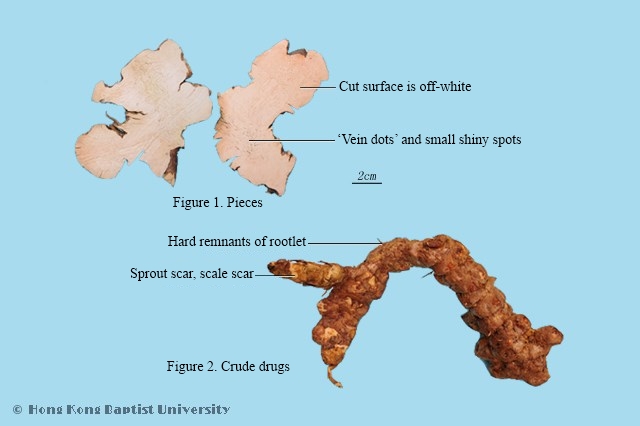Production RegionsPrimarily produced in the Chinese provinces of Guangdong, Zhejiang, Hunan, Hubei.
Macroscopic FeaturesIrregular lumps, slightly fat cylindrical and curved, often has branches, with nodular bulges, 5~15cm long, 2~5cm diameter; Externally earthy-brown or brown, rough, often has knife cutting scar and lateral root remnants; upper portion has stem scar; hard texture, hard to break, powdery, pale brown; faint odor, sweet and tasteless. Slices are long thin pieces, uneven size, about 1~3mm thick, uneven edge, pale reddish-brown or off-white; center has slight vascular bundle spots, and grainy shiny spots. Longitudinal slices often have patterns. Ducts are irregular, powdery, slightly flexible, after being wet by water, it feels smooth.
Quality RequirementsSuperior medicinal material has pale brown outer skin, firm texture, white or pale reddish-brown fractured surface, few vein spots, powdery.
PropertiesSweet, tasteless, neutral
FunctionsResolves toxin, eliminates dampness, promotes joints. Apply to syphilis, stranguria with turbid urine, pain and contraction of bones and muscles, beriberi, sores, anthracia, scrofula, the convulsion induced by syphilis and mercury poisoning, pain of sinew and bone.
Technical Terms‘Veins’: This refers to fiber bundles or vascular bundles in the medicinal material. After the medicinal material is broken, its fiber bundles or vascular bundles present as uneven filaments that look similar to the tendons and vessels of the human body, thus they are called ‘veins’.
OriginThe dried rhizome of Smilax glabra Roxb.(Liliaceae)
